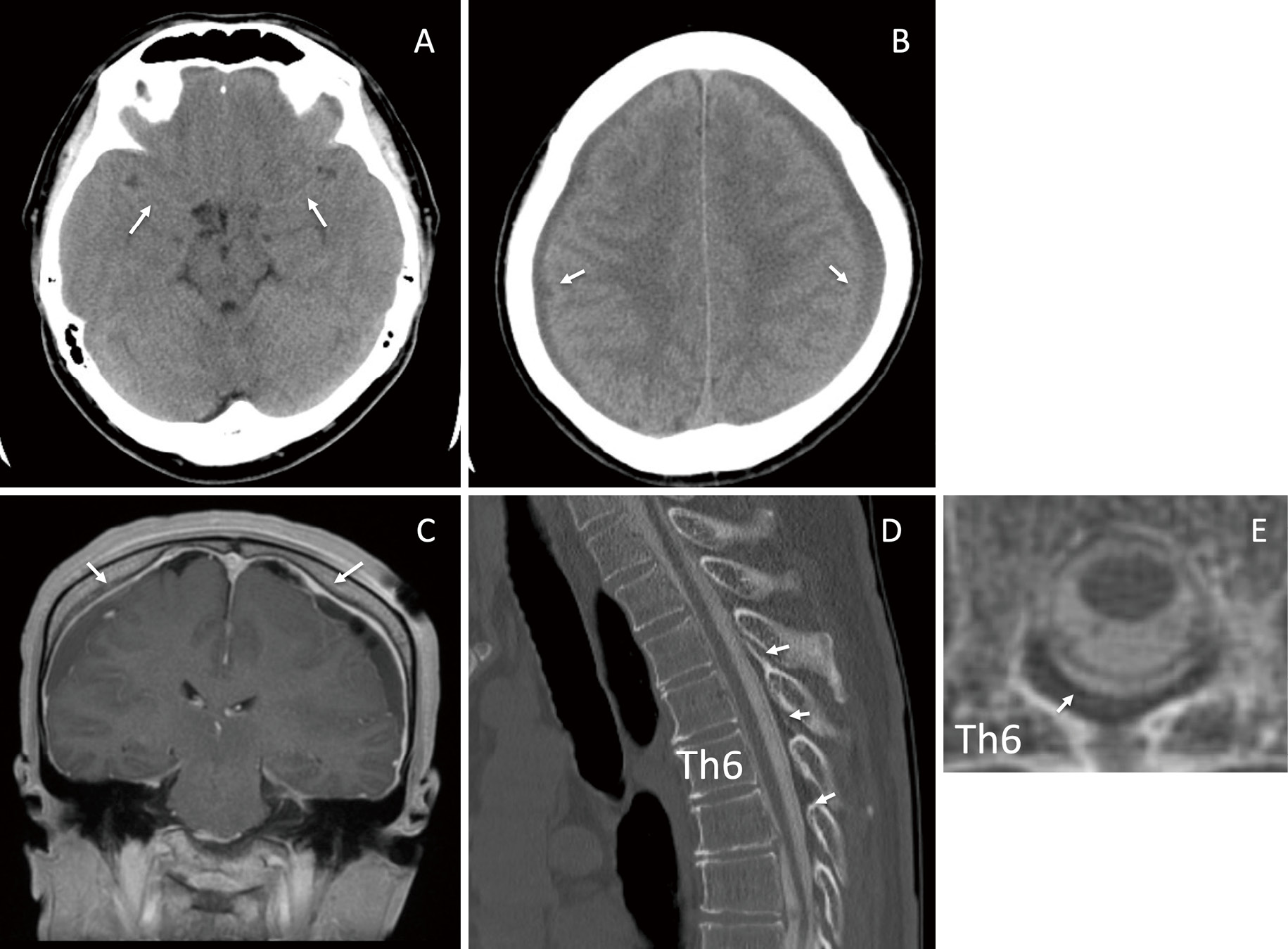- 著者
- Toshitsugu TERAKADO Akibumi OMI Yuji MATSUMARU Eiichi ISHIKAWA
- 出版者
- The Japan Neurosurgical Society
- 雑誌
- NMC Case Report Journal (ISSN:21884226)
- 巻号頁・発行日
- vol.10, pp.93-98, 2023-12-31 (Released:2023-04-10)
- 参考文献数
- 19
- 被引用文献数
- 1
Both chronic subdural hematoma (CSDH) and spontaneous intracranial hypotension (SIH) cause headaches. However, the etiologies are different: SIH headache is caused by decreased intracranial pressure (ICP), whereas CSDH headache results from increased ICP. Moreover, CSDH is treated by hematoma drainage, while SIH is treated by epidural blood patch (EBP). Treatment for the cases of combined SIH and CSDH is not well-established. Herein, we report two cases wherein ICP was monitored and safely controlled by EBP after hematoma drainage. Case 1: A 55-year-old man with progressive consciousness disturbance was diagnosed with bilateral CSDH. He underwent bilateral hematoma drainage; however, the headache became apparent during standing. We diagnosed SIH by diffuse pachymeningeal enhancement on brain MRI and epidural contrast medium leakage on CT myelography. Due to the re-enlargement of bilateral CSDH, we performed EBP after hematoma drainage and ICP monitor insertion. Finally, the headache and bilateral CSDH were resolved. Case 2: A 54-year-old man with persistent headache was diagnosed with bilateral CSDH. He underwent multiple hematoma drainage sessions. However, headache on standing persisted. We diagnosed SIH by diffuse pachymeningeal enhancement on brain MRI and epidural contrast medium leakage on CT myelography. Due to the re-enlargement of the left CSDH, we performed EBP after left hematoma drainage and ICP monitor insertion. Finally, the headache and bilateral CSDH were resolved. EBP after hematoma drainage and ICP monitoring was useful for SIH with bilateral CSDH. By monitoring ICP before EBP, the ICP was safely controlled and CSDH was resolved.
